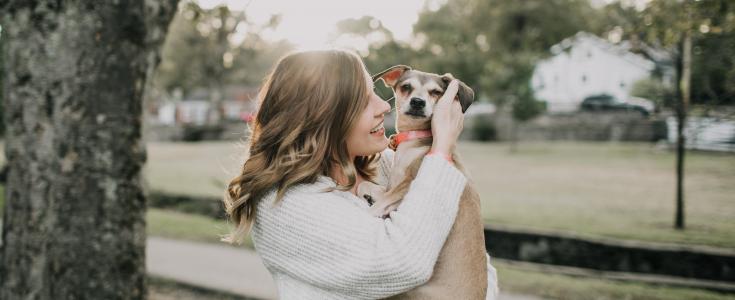Diet for Dogs With Lymphoma
Lymphomas are the most common cancer to strike dogs, but they also have a high rate of remission. This reprieve is typically only temporary, with few dogs living more than 18 months after the initial diagnosis. To make the most of this time, it is important to keep you canine friend as healthy as possible, and nothing has a bigger impact on a dog’s health than his diet.
Lymphoma, an Overview
A cancer of the lymphatic system, lymphoma attacks B- and T-lymphocytes (white blood cells) and causes them to grow rapidly and accumulate in the lymph nodes, where they quickly form painless swollen lumps under your dog’s skin. This swelling is the most common sign of the disease, but since lymphoma can also occur in the skin, stomach, liver and spleen, this is not the only symptom.
Chemotherapy is the standard of care for this kind of cancer, and is generally well tolerated in dogs, where it does not produce the same stereotypical side effects as it does in humans (hair loss, for example). This treatment must be backed up with a solid diet, though, to be fully effective.
Diet Features
Because the cancer and the treatment are both going to be taking a lot of energy out of the dog, a robust diet will help him remain healthy. It can also prevent weight loss. Such a diet for dogs with lymphoma should include plenty of protein, with a balance of carbohydrates and fats. Some recommend feeding the dog whatever he seems to like best, since his appetite will get pickier as the disease progresses. It is important to balance this, though, with the need to provide actual nutrients. If the dog will only eat jelly sandwiches, he may get enough calories, but he will lack for other vitamins and minerals.
Make sure the animal has enough omega-3, -6, and -9 fatty acids, as well as the antioxidant B-complex vitamins. Ideally, these would come from the dog’s diet, but if he will take as supplements and no other way, that is an option, too.
Avoid grains and most simple sugars. Cancer cells have been shown to thrive in sugar rich environments. Instead, opt for complex carbohydrates like the starches.
Key Goals
The emphasis in designing a diet for dogs with lymphoma should be on maintaining weight and boosting immune response. It should try to accomplish these things in a way that does not interfere with the dog’s remaining quality of life. This means not forcing your dog to eat when he’s not hungry, but also having food available if his appetite picks up.
Feeding Strategies
Start slow whenever introducing changes to your dog’s diet. Vomiting and nausea are to be expected and should not be taken to mean something ominous. If necessary, your vet may prescribe something for nausea so your pet can continue to eat and build up his strength.
It may be worth experimenting with several small meals a day, or with new feeding locations. This is especially important if the dog equates his old feeding area with the pain he felt before treatment began. In some cases, you may have to alternate areas or just feed the dog in a new place every night.
Remember, try to keep things light and fun for your dog. If he notices you’re stressed, it can make him uncomfortable eating, so for his health, try to make dinnertime an extra fun experience for him.
Photo: Pexels




